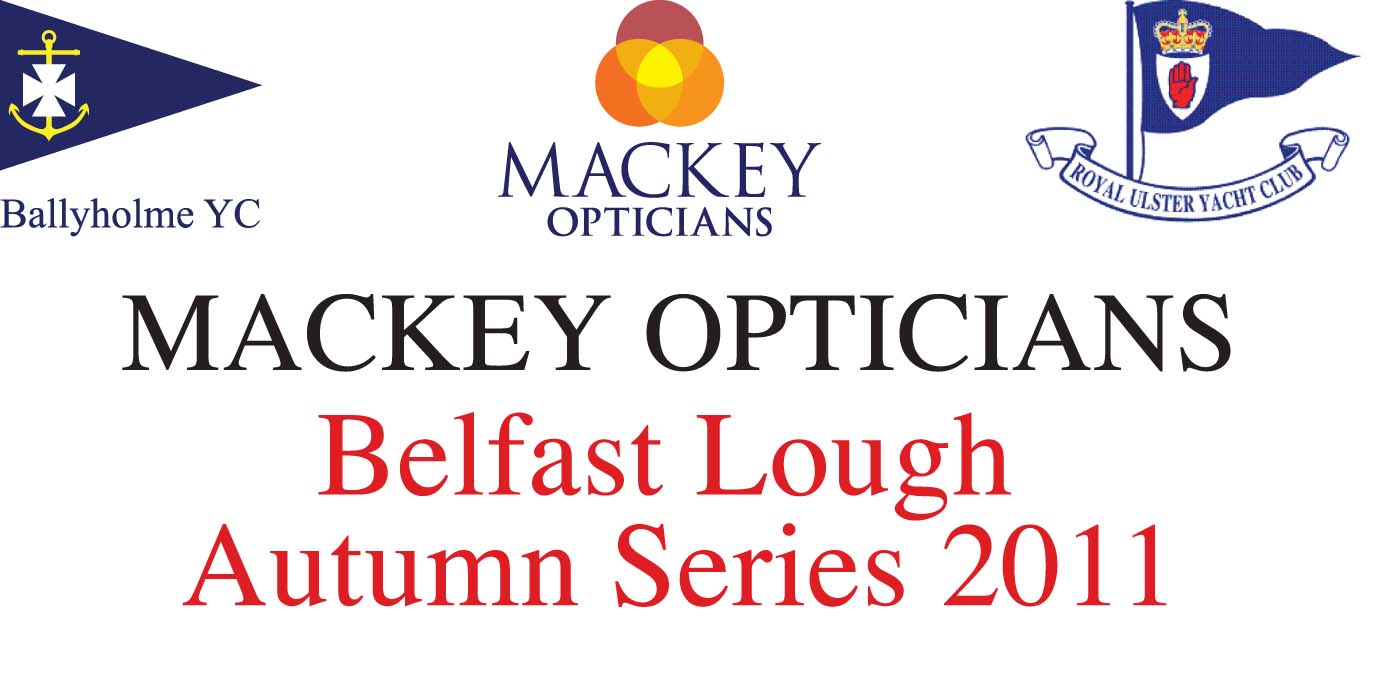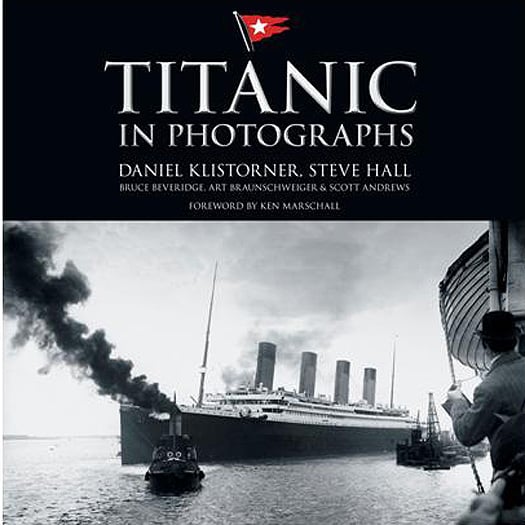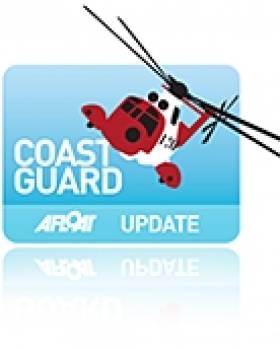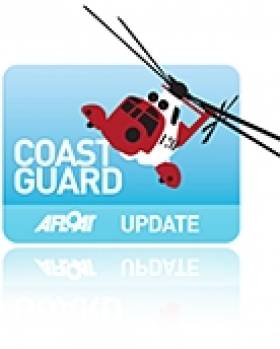Displaying items by tag: Belfast
Stranraer-Belfast Ferry Left Adrift Off Scottish Coast
The Press Association reports that the Stena Navigator was en route from Stranraer to Belfast when both of its engines broke down.
The ferry - carrying 70 passengers and 47 crew - was adrift some four nautical miles west of Corsewall Point lighthouse at the Mull of Galloway.
Clyde Coastguard confirmed that two Svitzer tugs, Norton Cross and Willowgarth, were dispatched to the vessel with the aim of towing it to Belfast, but the ferry managed to get one enging going and propelled itself at half power across the North Channel.
The Navigator arrived in port accompanied by the tugs around 4:30am. No injuries were reported in the incident.
'Chain Gang' Prevails in Belfast Lough Autumn League
What better way to energise yourself on a Sunday morning than going sailing? Last Sunday provided great conditions for the third race of the Mackey Eyecare Autumn Series. With winds gusting over 25 knots there was plenty of excitement to be watched from the shore, as the fleets were running downwind with spinnakers up and the odd death roll - mind you, the spinnakers were 'chicken chutes'. Despite the strong winds, racing was very close in the IRC class.
The top four boats finished within a minute of each other on corrected time. Ken Halliwell in CHAIN GANG was only 16 seconds ahead of Ian Wilson's RESPECT, despite Ken having two reefs in his mainsail. Ian flew his asymmetric spinnaker which kept him upright. The crew in TROUBLE had plenty of excitement when they broached and eventually ripped their spinnaker in two!

Cruiser racers run into problems on Belfast Lough
The six boat Sigma fleet had great close racing with some flying spinnakers and others not doing so. The Sherwoods and Taylors in SULA led from the start and managed to stay ahead of Paul Prentice in SQUAWK. IMPULZ put in a good race with the Johnston Brothers sticking to whitesails and still finishing third.
The IRC Whitesail shortened sails like the rest of the fleets and once again John Moorhead in MARGARITA notched up another win from Messrs Adair, Johnston and Jordan in ENIGMA.
There are two more weeks to go in the Mackey Opticians Autumn Series and with one discard to kick in, it's close competition in the IRC and Sigma classes.
RESULTS
IRC 1st Chain Gang - Ken Halliwell
2nd Respect - Ian Wilson
3rd Rattle 'n Hmm – Messrs Harrington, McVicar & McClugan
Sigma 33 – 1st Sula – Taylor & Sherwood
2nd Squawk – Paul & Emma Prentice
3rd IMPULZ – Johnston Bros
Whitesail 1st Margarita – J Moorhead
2nd Enigma – Messrs Adair, Johnston & Jordan
Olympic Visitor Wins Autumn League Elite Race
Despite the light airs on Belfast lough last Sunday morning for the fourth sailing race of the Mackey Eyecare Autumn Series, Ian Wilson and his crew had an impressive win in their Corby RESPECT. They were almost 12 minutes ahead of the second boat in the IRC class. Mark Ross's TROUBLE next with Donald McVicar in RATTLE 'N HUM third.
In the Sigma fleet start three of the five boats were over the line and this gave Paul Prentice in SQUAWK the opportunity to get clear and sail a great race to take an impressive first place. Burton Allen's STARSHINE CHALLENGER with Ken Green at the helm sailed a consistent race to take second place with BLUES creeping up to third place.
The RS Elites saw a welcome Australian visitor in the shape of Olympian, Russell McGovern at the helm of Fiona Hick's NO ANGEL. David Baird clung onto second place in JITTERBUG.
In the PY Whitesail class John Moorhead had a third successive win in MARGARITA.

Wet, Shocked but Unharmed, Two Crew Plucked from Liferaft off Ardglass
At 4.40pm Belfast Coastguard were notified through MRCC Clyde that Falmouth Coastguard had received an EPIRB from the fishing vessel 'Islander' that was believed to be fishing in their area. Just afterwards Belfast Coastguard received reports of a flare and wreckage just of Ardglass, Northern Ireland.
Fishing vessel 'Golden Shore' went to investigate and found the Islander's two crew in a life raft. They were wet, shocked but unharmed.
Ian Murdock Belfast Coastguard Watch Manager said:
"Despite the dramatic and rapid loss of their vessel this crew were prepared for this eventuality. They were able to raise the alarm quickly and are tonight safe and well.
"This swift resolution of what could have been a life ending incident is the reason that we recommend that all vessels are fitted with an EPIRB which can automatically send a distress alert and, give an accurate position of your vessel to the Coastguard with through a satellite based rescue system
New Titanic Book Tells Her Story In Photographs
Titanic In Photographs by Daniel Klistorner, Steve Hall, Bruce Beveridge, Art Braunschweiger and Scott Andrews is the story of Titanic in pictures, from build to tragic maiden voyage. It will be Published in October 2011. This £20 hardback follows the story to inevitable conclusion.
The name Titanic has become synonymous with catastrophe, the story of this luxurious liner legendary. Wrecked after colliding with an iceberg on her maiden voyage, the loss of around 1,500 lives among her passengers and crew has gone down in history as one of the most emotive and tragic disasters in history.

The new book on the Titanic will sell for £20
Titanic In Photographs tells her full story, from the shipyards of Harland & Wolff and its early vessels, with the backdrop of the great race to build the biggest and best passenger liner, to the frenzy of excitement surrounding her launch. Looking at her officers and crew, as well as her stops at Cherbourg and Queenstown the photographs follow the story to its inevitable conclusion, considering the lifeboats, the presence of the Carpathia and the aftermath of the shattering disaster.
• Commemorating 100 years of Titanic.
• Stunning images, including many rare photographs from collectors' archives.
• Written by five of the foremost Titanic experts in the world.
Daniel Klistorner is the world's foremost expert on Titanic's passenger accommodations and has consulted to the media, auction houses and museums around the world. Steve Hall, a renowned Titanic visual historian, has collected, studied and researched the ships photographic record for over three decades. Bruce Beveridge is one of the foremost authorities on Titanic's exterior and general working arrangements, and, with Scott Andrews, is a recognised authority on the technical aspects of her layout and construction. All four, along with Titanic modeller and researcher Art Braunschweiger, previously wrote TITANIC: The Ship Magnificent, the most comprehensive book published on Titanic to date.
Titanic In Photographs by Daniel Klistorner, Steve Hall, Bruce Beveridge, Art Braunschweiger, & Scott Andrews is the story or Titanic in pictures, from build to tragic maiden voyage. Published October 2011, this £20 hardback follows the story to inevitable conclusion.
Sharkbait Takes Another Bite at Royal Ulster.
Howth's Ben Duncan sailing Sharbait has etched another victory in the SB3 class following a weekend of very up and down conditions with some sizeable shifts and changes in pressure at the SB3 Northern Championships at Royal Ulster Yacht Club.
But the PRO team were well able and a full schedule of racing was completed on the Lough. Three of the top four Irish boats from the Worlds took three of the top four spots and had pace on pretty much every one, a further indication that going to Torbay has definitely given these boats a lift.
The Vaughan brothers continued their upward trajectory with a very solid second place. Andrew Ageo had a win in race 2 and pretty steady results to finish third. Dave Cheyne had an up and down regatta. The local sailors was very fast in patches but got buried a couple too many times to challenge.
Sharbait was lucky enough to not have to make too much of the conditions and sailed the fleet to produce another overall win.
Highlights of the weekend for the winners were winning the first race by 2:30 minutes and getting caught up in a match racine with Dave Cheyne for race 3. Cheyne pipped the Howth boat on the line by about a foot.
The next event in the SB3 calendar is the national champs in four weeks time. Flipper and Mel Collins are expected to be back in the fleet along with plenty of further competition.
1st Sharkbait
2nd Toucan 3
3rd Flutter
4th Team Cheyne

Royal Ulster presents Sharkbait their winning prize. Photos: Ken Hunter
Titanic Belfast to Host Region's Largest Function Suite
Event bookings are already being taken for the new Titanic visitors' centre due to open next spring in Belfast.
The €114 million Titanic Belfast is being contructed on the Belfast Lough site where the infamous cruise liner was itself built more than 100 years ago.
The building will feature a state-of-the-art interactive museum, including a special 'flying theatre' where visitors will be suspended above a giant cinema screen.
It also boasts the Titanic Suite, an opulent function area over two floors high in the roof of the structure that will replicate the interior of the ship's first class banqueting room.
Billed as the largest function area in the region, it will have space for up to 1,000 guests for a whole variety of events, from conferences to weddings to gala dinners.
The Irish Examiner has more on the story HERE.
Overdue Sailor Located
He had last communicated with his brother yesterday morning when he departed Peel, Isle of Man on passage to Ardglass in Northern Ireland.
He had declared that he would call his brother on his arrival at 21.00 yesterday evening. He did not make that call and his brother alerted the authorities this morning.
Belfast Coastguard called out the Southdown and Bangor Coastguard rescue teams to undertake a search of harbours, marinas and anchorages. Other harbours and marinas are being checked around the Isle of Man and the Liverpool area.
At 02.37pm this afternoon, the Isle of Man authorities managed to get a fix on his mobile phone on one of the rare occasions that it was switched on which indicated that he was still in the area of the Isle of Man. The coordination of the incident was transferred to Liverpool Coastguard, who requested the launch of the Port Erin and Port St Mary RNLI lifeboats who eventually located him 6 miles west of Niarbyl, Isle of Man.
After they checked he was OK and determining what communications equipment he had, which in this case was a mobile phone that had gone flat and a hand held VHF radio that was turned down, the sailor was confident that he would continue his passage to Ardglass.
Su Daintith, Watch Manager, Liverpool Coastguard said:
We are pleased that this sailor has been located safe and well and hope that he learns from this sailing experience that good communications and knowing how to use them are a vital part of equipment on any sailing trip.
You can always register your vessel with our small yacht and boat safety scheme CG66 and we would advise sailors that they can always let us know their passage plan.
Concerns Over Belfast Coastguard Jobs
Concerns persist over the future for Northern Ireland’s coastguard service staff - despite the British government backing down from plans to close the Bangor search and rescue centre.
As previously reported on Afloat.ie, the Bregenz House station was given a reprieve under revised proposals to streamline the UK's coastguard network.
However the coastguard workers' union told the Belfast Telegraph that assurances must still be given to preserve "the same level of service”.
Ian Graham of the Public and Commercial Services (PCS) union said: "The numbers they’re quoting in the proposals are not providing this service with enough staff.
"Lives are still at risk with these proposals, there isn’t one UK coastguard I have spoken to that doesn’t disagree with that. We need to keep fighting to safeguard the service. This was a small victory.”
The Belfast Telegraph has more on the story HERE.
Four Teenagers Rescued in Dundrum Bay
Belfast Coastguard immediately tasked Southdown Coastguard Rescue Team and requested the launch of the Newcastle RNLI Inshore Lifeboat. Northern Ireland Ambulance Service also responded to the incident.
Whilst search and rescue units were proceeding to the incident, a gentleman who has formally served as a volunteer Coastguard and lives nearby assisted in the rescue. He managed to get his dinghy into the water and get to the teenagers who were showing signs of hypothermia and were complaining of the cold.
After recovering all four teenagers with his dinghy, he made shore to be met by members of Southdown Coastguard Rescue Team and NI Ambulance Service paramedics. The four were transported to hospital by two ambulances for further assessment.
Gary Young, Watch manager, Belfast Coastguard said:
These teenagers are extremely lucky to have been rescued this evening. I would like to pay tribute to the quick thinking of a former Coastguard who's actions certainly made for a happy ending to this potentially life threatening incident. Southdown CRT also showed their professionalism throughout this incident which was co-ordinated by MRCC Belfast.
We would like to remind anyone visiting the coast to take great care near water. Do not put yourselves at risk and if you find yourselves in trouble, dial 999 and ask for the Coastguard.






































































